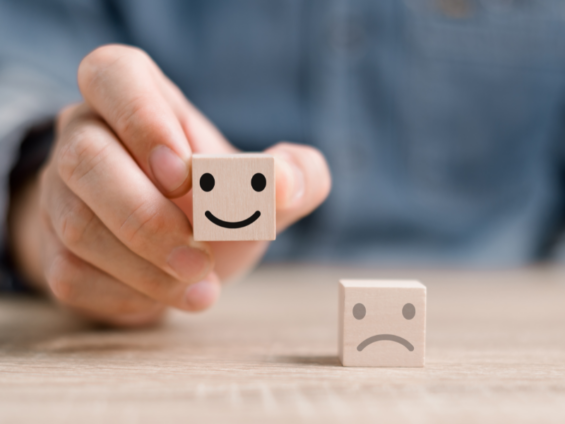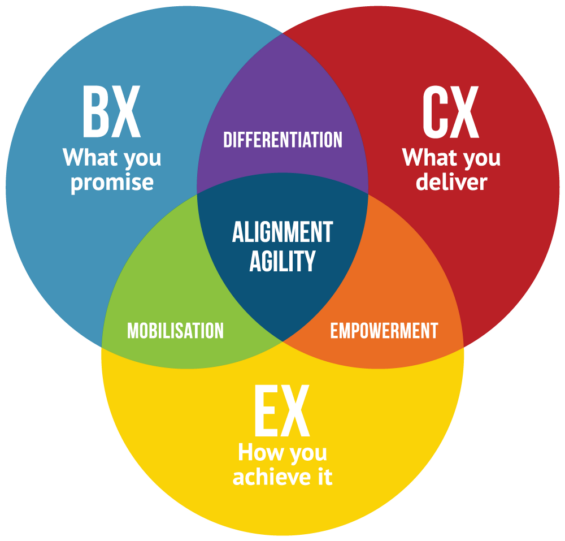Customer Experience and Customer Service: The Distinction That Makes a Difference

In today’s business arena, standing out is no longer just about the quality of your products or services. Above all, it’s about the experience you offer your customers. Two oft-used but sometimes misinterpreted terms come into play here: customer experience and customer service. Although interdependent, they represent distinct aspects of a company’s and its customers’ relationship.
Let’s delve into the subtleties of these two concepts and discover why distinguishing between them is crucial to customer satisfaction and loyalty by illustrating them with concrete examples.
Customer service
Customer service is a reactive action on the company’s part when the customer comes to it with a question, comment, or issue. It refers to the assistance and advice a company provides its customers, whether before, during, or after purchase. It often involves direct interaction between a representative and a customer and encompasses aspects such as :
- Solving an online ordering problem
- Answering a question about a product
- Handling a product return
In short, customer service’s main aim is to meet customers’ immediate needs and resolve their problems quickly and efficiently. Although it is an essential part of the customer experience, it represents only a specific and limited facet.
The customer experience
Customer experience, on the other hand, encompasses the totality of a customer’s perceptions and feelings throughout their interaction with a company. It involves proactive actions taken by the company to create a specific, chosen experience with the customer. It begins when the customer becomes aware of the brand and continues long after the purchase. Customer experience encompasses all the interactions, direct and indirect, that a customer has with the company, for example :
Discovering an innovative product thanks to captivating advertising: A customer is attracted by an online advertisement for a new cell phone.
Easy navigation on an ergonomic website: A customer wants to buy a new pair of shoes online. The company’s website is user-friendly and easy to navigate. The customer can easily find the shoe he’s looking for, compare sizes and colors, and place his order in just a few clicks.
Interacting with helpful, knowledgeable staff: A customer visiting a clothing store is immediately greeted by a friendly salesperson. The salesperson takes the time to understand the customer’s needs and offers several options that match their style and budget.
Receive post-purchase follow-up to ensure satisfaction: After purchasing a new laptop, the customer receives an e-mail from the company asking if they are satisfied with their purchase and offering further assistance if needed.
In short, the customer experience is what you deliver, keeping your promise. A positive experience results from consistent, thoughtful management of every customer touchpoint. It aims to create a strong and lasting emotional bond between the customer and the brand, thus fostering loyalty and referrals. So, to deliver a seamless customer experience, developing a persona and a customer journey helps a company plan its customer service better.

Key differences: Identifying the nuances
Scope and scale: Customer service is a one-off, specific interaction, often reactive, whereas customer experience is global and continuous, encompassing the entire customer journey, from product discovery to daily use.
Objective: Customer service aims to solve problems and meet immediate needs, while customer experience seeks to build a positive, lasting relationship.
Impact: A poor customer service experience can immediately damage a company’s perception, but it can also have long-term effects on brand loyalty and reputation. For example, a long wait to reach a customer service representative or an unsatisfactory problem resolution can immediately damage a customer’s perception of a brand. In contrast, a series of negative customer experiences can lead the customer to stop doing business with the company and share the negative experience with others.
Responsibility: Customer service is often the responsibility of a specific team or department, whereas customer experience is the entire company’s responsibility, involving all departments, from marketing and production to sales and human resources. Indeed, all company employees, from product designers to checkout agents, play a part in creating a positive customer experience by interacting with customers in a helpful, competent, and enthusiastic manner.
Why is this distinction essential?
Understanding and differentiating these two concepts enables companies to structure their strategies and efforts better. While important, focusing solely on customer service can lead companies to pay attention to other crucial aspects of the customer experience that influence overall brand perception and customer loyalty. Customer service is essential to the customer experience, but it’s only one piece.
By contrast, a holistic approach that integrates excellent customer experience with effective customer service creates a synergy that strengthens the brand, builds customer loyalty, and drives long-term growth.
Simply put, investing in customer experience is a winning bet. Let’s talk about it!
Category
Share

